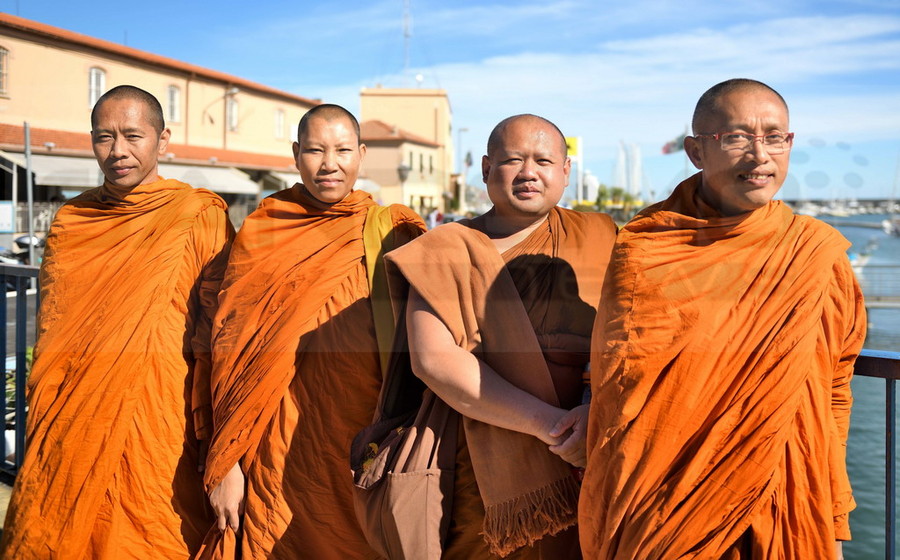Food offerings in Buddhism

Offering food is one of the oldest and most common rituals in Buddhism. Food is given to monks during alms rounds and also ritually offered to tantric deities and hungry ghosts. Offering food is a meritorious act that also reminds us not to be greedy or selfish.
Offering alms to monks
The first Buddhist monks did not build monasteries. Instead they were homeless beggars asking for all their food. Their only possessions were their tunic and begging bowl.
Today, in many predominantly Theravada countries such as Thailand, monks still rely on receiving alms for most of their food. The monks leave the monasteries early in the morning. They walk in single file, the oldest first, bringing their alms before them. Lay people await them, sometimes on their knees, and put food, flowers or incense sticks in the bowls. Women must be careful not to touch the monks.
Monks don't speak, not even to say thank you. Giving alms is not thought of as charity. Giving and receiving alms creates a spiritual connection between monastic and secular communities. Lay people have a responsibility to physically support the monks, and monks have an obligation to support the community spiritually.
The practice of begging has mostly disappeared in Mahayana countries, although in Japan monks periodically do takuhatsu, "request" (taku) "with bowls" (hatsu). Sometimes monks recite sutras in exchange for donations. Zen monks can go out in small groups, chanting "Ho" (dharma) as they walk, indicating that they are carrying the dharma.
The monks who practice takuhatsu wear large straw hats that partially obscure their faces. The hats also prevent them from seeing the faces of those who give them alms. There is no donor and no receiver; just give and receive. This purifies the act of giving and receiving.
Other food offerings
Ceremonial food offerings are also a common practice in Buddhism. The precise rituals and doctrines behind them differ from one school to another. Food can be left simply and silently on an altar, with a small arch, or elaborate songs and complete prostrations could accompany the offer. However, it is done, as for the alms given to the monks, offering food on an altar is an act of connection with the spiritual world. It is also a means of freeing selfishness and opening the heart to the needs of others.
It is a common practice in Zen to offer food to hungry ghosts. During formal meals during the sesshin, an offering bowl will be passed or brought to each person about to take the meal. Everyone takes a small piece of food from his bowl, touches it on the forehead and puts it in the offering bowl. The cup is then placed ceremonially on the altar.
Hungry ghosts represent all our greed, thirst and attachment, which binds us to our pains and disappointments. By giving away something we crave, we separate ourselves from our clinging and the need to think about others.
Eventually, the food on offer is left out for birds and wild animals.